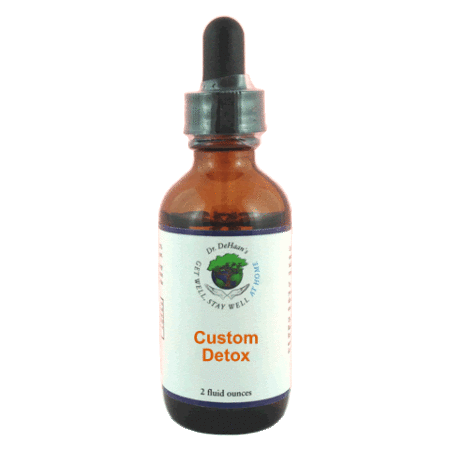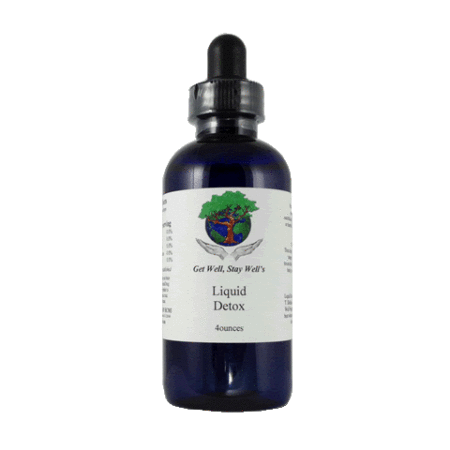 The primary commercial source of nicotine is by extraction from the dried leaves of the tobacco plant. Since nicotine is the drug in tobacco leaves, whether someone smokes, chews, or sniffs tobacco, he or she is delivering nicotine to the brain. Each cigarette contains about 10 milligrams of nicotine. Because the smoker inhales only some of the smoke from a cigarette and not all of each puff is absorbed in the lungs, a smoker gets about 1 to 2 milligrams of the drug from each cigarette. A drop of pure nicotine would kill a person. It is unlikely that a person would overdose on nicotine through smoking alone, although overdose can occur through combined use of nicotine patches or nicotine gum and cigarettes at the same time. Spilling a high concentration of nicotine onto the skin can cause intoxication or even death, since nicotine readily passes into the bloodstream following dermal contact.
The primary commercial source of nicotine is by extraction from the dried leaves of the tobacco plant. Since nicotine is the drug in tobacco leaves, whether someone smokes, chews, or sniffs tobacco, he or she is delivering nicotine to the brain. Each cigarette contains about 10 milligrams of nicotine. Because the smoker inhales only some of the smoke from a cigarette and not all of each puff is absorbed in the lungs, a smoker gets about 1 to 2 milligrams of the drug from each cigarette. A drop of pure nicotine would kill a person. It is unlikely that a person would overdose on nicotine through smoking alone, although overdose can occur through combined use of nicotine patches or nicotine gum and cigarettes at the same time. Spilling a high concentration of nicotine onto the skin can cause intoxication or even death, since nicotine readily passes into the bloodstream following dermal contact.
Smoking cigarettes or inhaling second-hand smoke when someone smokes in your presence are primary ways you will get exposed to nicotine. Tobacco can be smoked in cigarettes, cigars, or pipes. It can be chewed or, if powdered, sniffed. It doesn't matter how glamorous you look doing it, nicotine is highly addictive and it is toxic.
As nicotine enters the body, it is distributed quickly through the bloodstream and crosses the blood-brain barrier reaching the brain within 10–20 seconds after inhalation. The elimination half-life of nicotine in the body is around two hours.
The amount of nicotine absorbed by the body from smoking depends on many factors, including the types of tobacco, whether the smoke is inhaled, and whether a filter is used. For chewing tobacco, dipping tobacco, snus and snuff, which are held in the mouth between the lip and gum, or taken in the nose, the amount released into the body tends to be much greater than smoked tobacco.
Forty-eight million Americans smoke because of addiction to nicotine. If you must use a source of nicotine, consider a source of more pure tobacco (like pipe or cigar) because the most toxic part of a cigarette is in fact, not the nicotine, but the thousands of chemicals combined with the tobacco leaf. If you make the choice to continue the use of tobacco, consider organic sources so you are not smoking the many pesticides often sprayed on tobacco leaves.
This remedy helps to antidote nicotine and assist the body in rebuilding the many enzymes and metabolites that become deficient when nicotine is used, ie, nicotine N'-oxide, nornicotine, nicotine isomethonium ion, 2-hydroxynicotine, nicotine glucuronide, Glucuronidation, etc.
Detoxification of all Nicotine poisons and related complications
Help that itch, burn, rash, infection..
Detoxification of all PBDE's poisons and related complications
The best germicide known to man



 Chemically speaking, MSG is approximately 78 percent free glutamic acid, 21 percent sodium, and up to 1 percent contaminants. It's a misconception that MSG is a flavor or "meat tenderizer." In reality, MSG has very little taste at all, yet when you eat MSG, you think the food you're eating has more protein and tastes better. It does this by tricking your tongue, using a little-known fifth basic taste called umami.
Chemically speaking, MSG is approximately 78 percent free glutamic acid, 21 percent sodium, and up to 1 percent contaminants. It's a misconception that MSG is a flavor or "meat tenderizer." In reality, MSG has very little taste at all, yet when you eat MSG, you think the food you're eating has more protein and tastes better. It does this by tricking your tongue, using a little-known fifth basic taste called umami. Lindane is an organochlorine insecticide and fumigant which has been used on a wide range of soil-dwelling and plant-eating insects. It is commonly used on a wide variety of crops, in warehouses, in public health to control insect-borne diseases, and (with fungicides) as a seed treatment. Despite a recent global ban on its agricultural use, the pesticide, a potent neurotoxin, is still used in shampoos and lotions in the U.S. to control head lice and scabies.
Lindane is an organochlorine insecticide and fumigant which has been used on a wide range of soil-dwelling and plant-eating insects. It is commonly used on a wide variety of crops, in warehouses, in public health to control insect-borne diseases, and (with fungicides) as a seed treatment. Despite a recent global ban on its agricultural use, the pesticide, a potent neurotoxin, is still used in shampoos and lotions in the U.S. to control head lice and scabies. An insecticide is a pesticide used to kill insects. Insecticides are used in agriculture, medicine, industry and the household. The use of insecticides is believed to be one of the major factors behind the increase in agricultural productivity in the 20th century. This is great for production, but those of us that eat the food have now ingested these toxic insecticides.
An insecticide is a pesticide used to kill insects. Insecticides are used in agriculture, medicine, industry and the household. The use of insecticides is believed to be one of the major factors behind the increase in agricultural productivity in the 20th century. This is great for production, but those of us that eat the food have now ingested these toxic insecticides. Hexane (n-Hexane) is a chemical made from crude oil. Most of the hexane used in the industry is mixed with similar chemicals in products known as solvents. The major use for solvents containing hexane is to extract vegetable oils from crops such as soybeans. Because cooking oils are processed with solvents containing hexane, very small amounts may be present in these products. They are also used as cleaning agents in the printing, textile, furniture and shoemaking industries. Certain kinds of special glues used in the roofing and the shoe and leather industries also contain hexane. Gasoline contains about 1-3% hexane, so it is released into the air at service stations and in automobile exhaust. Hexane is also present in rubber cement.
Hexane (n-Hexane) is a chemical made from crude oil. Most of the hexane used in the industry is mixed with similar chemicals in products known as solvents. The major use for solvents containing hexane is to extract vegetable oils from crops such as soybeans. Because cooking oils are processed with solvents containing hexane, very small amounts may be present in these products. They are also used as cleaning agents in the printing, textile, furniture and shoemaking industries. Certain kinds of special glues used in the roofing and the shoe and leather industries also contain hexane. Gasoline contains about 1-3% hexane, so it is released into the air at service stations and in automobile exhaust. Hexane is also present in rubber cement. Herbicides, also commonly known as weed killers, are used to kill unwanted plants. Selective herbicides kill specific targets while leaving the desired crop relatively unharmed. Some of these act by interfering with the growth of the weed and are often synthetic "imitations" of plant hormones. Herbicides that are used to clear waste ground, industrial sites, railways and railway embankments are non-selective and kill all plant material that they come into contact with. Smaller quantities are used in forestry, pasture systems, and management of areas set aside as wildlife habitat.
Herbicides, also commonly known as weed killers, are used to kill unwanted plants. Selective herbicides kill specific targets while leaving the desired crop relatively unharmed. Some of these act by interfering with the growth of the weed and are often synthetic "imitations" of plant hormones. Herbicides that are used to clear waste ground, industrial sites, railways and railway embankments are non-selective and kill all plant material that they come into contact with. Smaller quantities are used in forestry, pasture systems, and management of areas set aside as wildlife habitat. Fungicides are extensively used in industry, agriculture, and the home and garden for a number of purposes. Fungi can cause serious damage in agriculture, resulting in critical losses of yield, quality and profit. At the end of the season, profit is the greatest concern for farmers, so companies will use fungicides to protect seeds during shipment and storage. Fungicides are chemicals used to cure fungal, mold and slime diseases in gardens, lawns, and crops. They are also used in protection of carpet and fabrics in the home.
Fungicides are extensively used in industry, agriculture, and the home and garden for a number of purposes. Fungi can cause serious damage in agriculture, resulting in critical losses of yield, quality and profit. At the end of the season, profit is the greatest concern for farmers, so companies will use fungicides to protect seeds during shipment and storage. Fungicides are chemicals used to cure fungal, mold and slime diseases in gardens, lawns, and crops. They are also used in protection of carpet and fabrics in the home. Formaldehyde is naturally produced in very small amounts in our bodies as a part of our normal, everyday metabolism and causes us no harm. It can also be found in the air that we breathe at home and at work, in the food we eat, and in some products that we put on our skin. A major source of formaldehyde that we breathe everyday is found in smog in the lower atmosphere. Automobile exhaust from cars without catalytic converters or those using oxygenated gasoline also contain formaldehyde.
Formaldehyde is naturally produced in very small amounts in our bodies as a part of our normal, everyday metabolism and causes us no harm. It can also be found in the air that we breathe at home and at work, in the food we eat, and in some products that we put on our skin. A major source of formaldehyde that we breathe everyday is found in smog in the lower atmosphere. Automobile exhaust from cars without catalytic converters or those using oxygenated gasoline also contain formaldehyde. People associate certain colors with certain flavors, and the color of food can influence the perceived flavor in anything from candy to wine. For this reason, food manufacturers add these dyes to their products. Sometimes the aim is to simulate a color that is perceived by the consumer as natural, such as adding red coloring to glacé cherries (which would otherwise be beige).
People associate certain colors with certain flavors, and the color of food can influence the perceived flavor in anything from candy to wine. For this reason, food manufacturers add these dyes to their products. Sometimes the aim is to simulate a color that is perceived by the consumer as natural, such as adding red coloring to glacé cherries (which would otherwise be beige). Fluoride in drinking water was originally added in the 1940s to prevent tooth decay, or that was the cover story. The hard truth is that fluoride can do little to nothing to prevent decay. Studies have now shown that fluoride causes dental fluorosis (decreasing density) in 10% of the population! (see photo)
Fluoride in drinking water was originally added in the 1940s to prevent tooth decay, or that was the cover story. The hard truth is that fluoride can do little to nothing to prevent decay. Studies have now shown that fluoride causes dental fluorosis (decreasing density) in 10% of the population! (see photo)